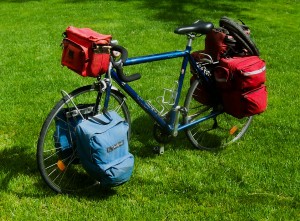Riding a bicycle is inherently dangerous. However, I bicycle 10-15 miles a day anyway and in higher traffic conditions. I see the added risk of averaging 45 miles a day—but in significantly lighter traffic conditions—as somewhat of a wash.
The most dangerous part of this ride from a traffic perspective will be Istanbul, Turkey. There are about 20 million people in Istanbul, and the traffic is reputed to be almost unmanageable from a bike. I will have to deal with it when I get there! The most dangerous part of the trip from sources other than cars will be the South-Eastern part of the United States. This is based upon the experience of many cyclists who have undertaken similar journeys across this part of the USA. I know this sounds strange! But I have read about people who have cruised across Iran, but have had immense difficulty in the South-Eastern part of the USA.
This is my basic philosophy about the risk: Each of us only gets so many trips around the sun. So far, I have had 54 of them and, for the most part, I have been very blessed. I want to take one of these trips and spend it pursuing my heart’s desire. It’s worth the added risk.
Actually, my worst fears have nothing to do with traffic or bad people that I might meet along the way. In my view, the biggest risk that I face is that something will go wrong with my body, making it impossible for me to complete the journey. Then, after all of the planning, investment and changes I am making to my life—I will have to come back home as a failure. This is what I fear, but I am willing to take this risk as well.
